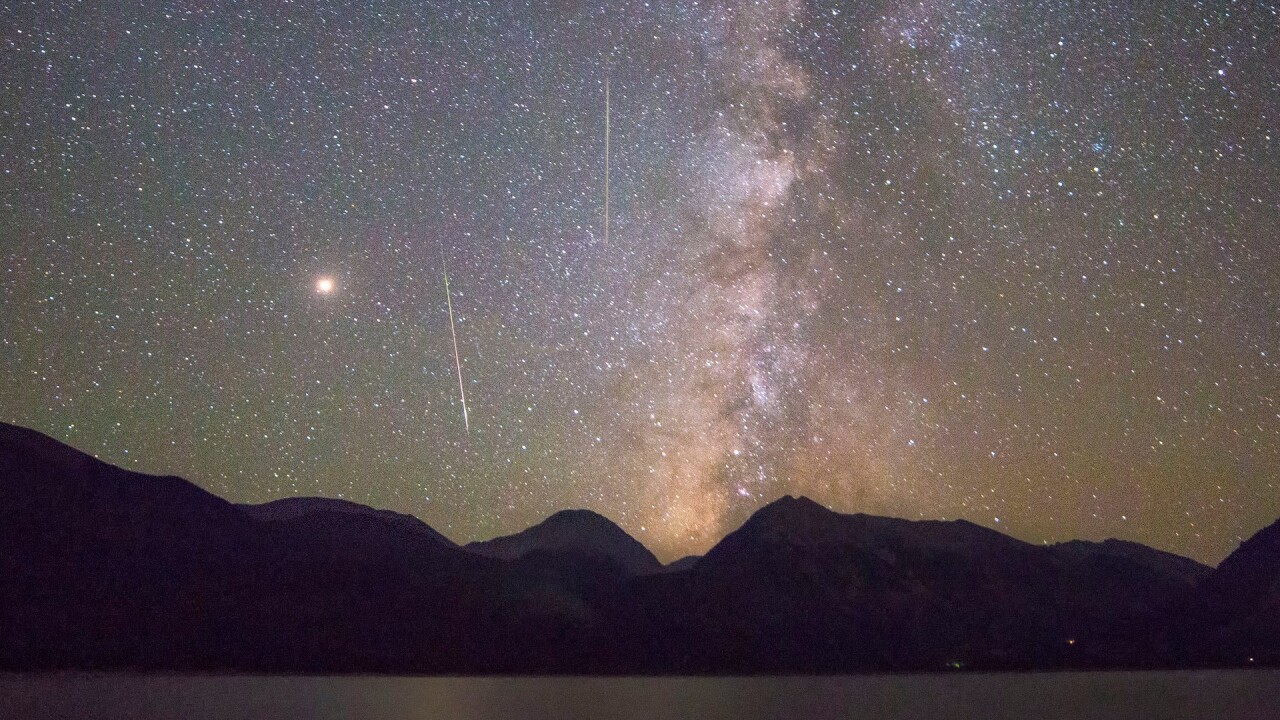Update August 14 | While the Perseids have passed their "maximum" they will still be visible through August 24th.
The window of viewing, in fact, will become longer as the new moon approaches. Between now and August 19 (the next new moon) the illumination from the moon will drop from about 20% of 0%.
A darker sky will lead to easier viewing of the Perseids!
What are the Perseids?

The Perseids are an annual meteor shower that peaks on August nights in the northern hemisphere.
Considered one of the most popular meteor showers of the year, the Perseids are great for viewing because they occur on warm Summer nights with bright skies and a high meteor rate per hour.
What causes them?

The Perseid meteor shower comes from Earth passing through the Swift-Tuttle comet's orbit. The Swift-Tuttle comet has a 16-mile wide nucleus, making it the largest known object to repeatedly pass Earth.
As Earth passes through the trail of the comet, pieces of dust and debris fall through our atmosphere. The bright lights you're seeing are these pieces of debris burning up as they travel at 37 miles per second.
When and how to see the meteor shower?

The best time to see the Perseids will be from 12-5am Tuesday night/Wednesday morning. This is when Earth will be passing through the dustiest and most dense part of the Tuttle-Swift comet path.
To see the meteors, find as dark of a place as possible, and look up and to the north. Give your eyes 30 minutes to adjust to the dark, and try to get away from big cities to limit light pollution.
Normal meteor rates are 50-75 meteors per hour, or roughly one meteor per minute. The longer you can patiently wait and stare at the sky, the more you'll see through the pre-dawn hours Wednesday.

The forecast sky cover shows clearing cloud cover overnight. Even though most of the clouds should be gone by midnight, there could be some lingering cirrus scattered across the sky. The longer you wait tonight, the clearer the skies should become.
The moon is expected to be half full. This year's slightly dimmer moonlight should allow for better viewing of the meteors, as it will be less light pollution from the moon itself.

Please share any photos of videos of the Perseids with use here at KOAA!
You can do this by posting them to the KOAA Facebook page or sending an email to mypics@koaa.com or weather@koaa.com




